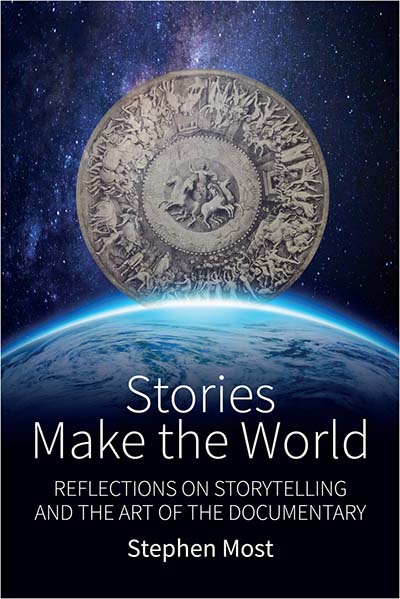 The following is an excerpt from Stories Make the World: Reflections on Storytelling and the Art of the Documentary by Stephen Most.
The following is an excerpt from Stories Make the World: Reflections on Storytelling and the Art of the Documentary by Stephen Most.
American environmental thinking emerged in response to the rise of industry, the acceleration of movement, and, as forests were leveled to make ties and fences, bridges and buildings and to clear land for crops and cities—the destruction of natural places. “In wildness is the preservation of the world,” wrote Emerson’s friend Henry David Thoreau. John Muir thought “the earth as seen in the clean wilds of the mountains is about as divine as anything the heart of man can conceive.”
Muir was determined to protect the divinity of wildness from the impacts of people and machines such as industrial-scale logging and sheep herding. The creation of the National Park Service and the setting aside of wilderness from road-building and economic activities—beginning with Aldo Leopold’s Gila Wilderness Area and including the Arctic National Wildlife Refuge—aimed to keep at least parts of the natural world intact. Yet the effects of climate change on the clean wilds of the Arctic, whose melting permafrost is not permanent after all, show that no law and no boundary can shield nature from what the heart of man conceives.
Some of the stories that portray what people have done to the natural world replace Biblical tales of the fall of man with a death-of-nature narrative. Rachel Carson’s Silent Spring, a book that inspired generations of environmentalists, begins with “A Fable for Tomorrow. There was once a town in the heart of America where all life seemed to live in harmony with its surroundings. . . Then a strange blight crept over the area and everything began to change. . . There was a strange stillness. The birds, for example—where had they gone?” The disaster Carson warned of was no fable. DDT and other pesticides aimed at eradicating insects poisoned birds and fish and contributed to outbreaks of cancer in human populations.
As laws to clean the air and waters of pollution and protect endangered species became effective tools in the hands of environmental organizations, the storylines of documentaries like Oil On Ice praised activist responses to prospects of doom. With stunning cinematography, that film expresses the beauty of the coastal plain the Gwich’in call “the place where life begins.” Considering the impacts oil extraction could have on its landscapes and wildlife, as have occurred across 95% of Alaska’s north coast already, and considering the leverage the fossil fuels industry has on elected officials, efforts to protect such beauty, however inspiring, may not succeed in the long run.
It is challenging to face a prospect like this without discouragement. Environmental tales of extinction and catastrophic change have far less appeal than evangelical stories about the fall of man. For unlike sermons that promise an afterlife, the death-of-nature narrative offers no transcendence. Instead of wildness being the hope of the world, as Muir believed, such tales diminish hope for wildness.
How then does a documentary storyteller encourage optimism of the will along with pessimism of the intellect? How is it possible without appealing to faith or acceding to scenarios of doom to keep hope alive?
What renews hope and awakens a sense of wonder amid the distractions and distresses of this transformational era is the love of life. That emotion nourishes indigenous cultures, it inspires naturalists, and is shared by many who work and play and simply go outdoors, whatever their ethnicity, way of life, and profession. Like the air, joyful awareness of living things cannot be seen. Cinematography, however stunning, cannot express it. What can evoke that feeling are nature sounds, as when Aldo Leopold heard on the Rio Gavilan “a vast pulsing harmony—its score inscribed on a thousand hills, its notes the lives and deaths of plants and animals, its rhythms spanning the seconds and the centuries.”
Spring is not yet silent. One need not go into the wilds to hear nature sounds. By including what soundscape ecologist Bernie Krause calls “the great animal orchestra,” a film can convey the sense of being outdoors, which is a far cry from seeing the outdoors. That matters in a world that is mediated for so many via lighted screens. And it matters beyond the immediate experience. Listening to natural voices leads beyond belief in man’s mandate to dominate life and beyond the grief one feels having realized that life on Earth is changing irreversibly.
Stephen Most is a writer and filmmaker. He has writing credits on four Academy Award “best documentary” nominees and five Emmy-winning films, including Wonders of Nature, Promises, and Green Fire: Aldo Leopold and a Land Ethic for Our Time. His book River of Renewal: Myth and History in the Klamath Basin was published in 2006
